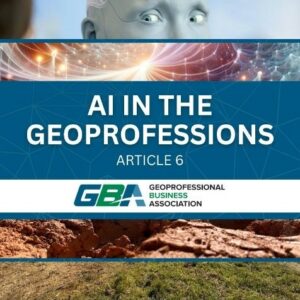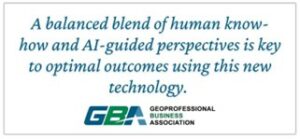15 Geotechnical Engineering Applications of Large Language Models
In the ever-evolving landscape of the geoprofessional industry, artificial intelligence (AI) continues to drive innovation, efficiency, and curiosity. GBA’s Business Technology Committee produced a six-part series to educate GBA members on the implications of AI on the geoprofessions. The articles, written by Enrique Farfan, Ph.D., P.E. ENV SP (HDR), explore how this technology works and its potential uses.
Enrique Farfan, Ph.D., P.E. ENV SP (HDR), explore how this technology works and its potential uses.
The sixth and final article in the series provides a list of large language model (LLM) applications for geotechnical engineers.
This comprehensive exploration of how LLMs can assist in geotechnical engineering presents a wealth of applications across various stages, including:
• Code compliance and standards
• Risk analysis and hazard assessment
• Enhanced collaboration and communication.
The article provides specific examples of prompts and responses, utilizing an LLM to read from drawings, generate a markdown-based mind map, outline a technical report, and provide step-by-step instructions on complex calculations in Excel, such as estimating clay layer consolidation based on Terzaghi’s theory.

Though AI offers immense possibilities, it’s vital to approach this technology cautiously, without closing the doors to its potential uses. Depending solely on AI without human intervention may result in oversights. A balanced blend of human know-how and AI-guided perspectives is key to achieving optimal outcomes using this new technology. The future of AI in the geotechnical engineering field is promising.
READ “APPLICATIONS OF LLM IN GEOTECHNICAL ENGINEERING: USE IT OR LOSE.”
See the previous articles in the series:
AI Unveiled: The Wizardry Behind Chatbots and Intelligent Systems
How Large Language Models Work: In a Nutshell
The Ghost in the Machine: Hallucinations
Superprompts: How to Talk with the Genie and Keep it in the Bottle
Role-Play Your Way: How to Talk with Terzaghi